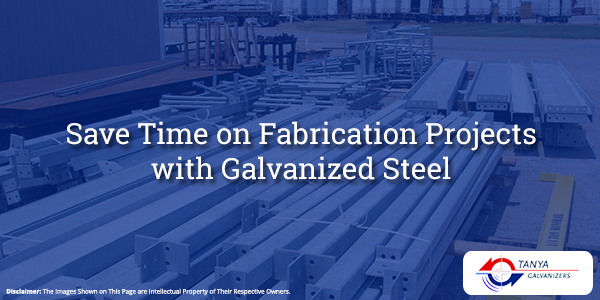Galvanizing is basically the process of adding a coating on any base metal for the purpose of increasing its strength, efficiency as well as durability. In most of the cases of galvanization, the base metal is steel and zinc is the metal with which the steel is coated. This coating of zinc on stainless steel readily enhances its strength and durability. This is exactly the reason as to why the process of galvanization is so popular. But it is to be kept in mind, that a trusted, reputed and reliable galvanizing service provider like Tanya Galvanizers should be necessarily chosen so as to get the best possible results in this regard.
Now, the process of galvanization is classified into two main types which are as listed below.
- Hot dip galvanizing
- Cold galvanized
These two processes of galvanization have the same ultimate motive of application of a coating to the base metal but there are some differences between the two process of galvanization. A detailed explanation of the difference between hot dip galvanization and cold galvanized are as discussed below.
Differences in Terms of Plating
In hot dip galvanization the base metal is dipped into a bath of molten zinc so that a layer of zinc is formed on the base metal where the zinc coat very strongly adheres to the base metal. This process helps in the prevention of the base metal from being corroded thereby enhancing its durability.
On the other hand, cold galvanizing where the zinc salt solution is plated on to the base metal by the process of electrolysis. This process does not involve any kinds of heating. This form of galvanization does not allow the zinc to adhere strongly to the base metal and a wet environment causes the coating to fall off very easily. Cold galvanizing is also referred to as plating.
Differences in Technical Terms
The base metal is first degreased and then followed up with a number of process of like pickling, dipping, drying, immersion in molten zinc & finally cooled in case of hot dip galvanization.
On the other hand, in case of cold galvanizing involves a process of electrolysis of a solution of zinc salt in which the zinc gets deposited on the base metal located at the anode during the process of electrolysis. The base metal so placed at anode during the process of electrolysis goes through the process of degreasing and picking prior to the process.
Differences in the Process of Treatment
Hot dip galvanization is actually a chemical treatment in which an where an electrochemical reaction takes place.
But in case of cold galvanization, a physical treatment takes place in which a layer of zinc just gets brushed on the base metal.
Differences in Function
The base metal is immersed into a bath of molten zinc which forms a uniform layer of zinc on the base metal that strongly adheres to the to its surface thereby enhancing the benefits of the galvanizing process since it resists corrosion, rusting etc. in a much better manner.
During the process of electrolysis in case of cold galvanizing, the zinc is deposited on the base metal at the anode during which is not at all uniform. As it is conducted in a wet environment, the coating layer of zinc falls off quite easily.
Differences in Emissions
Hot dip galvanizing involves much lesser emissions and the galvanized pollutants includes the parts of waste acid pickling mainly.
But the cold galvanized pollutants include parts of electroplating waste, waste acid pickling, liquid waste such as passivation.
Thus, it can be clearly understood that hot dip galvanizing is a much more appropriate and effective option as compared to cold galvanization.
Why Tanya Galvanizers?
At the time of looking forward to the best hot dip galvanizing services, no other option would be as good as Tanya Galvanizers in this regard. With their years of experience and a highly trained team of experts make sure that Tanya Galvanisers is undoubtedly the best when it comes to hot dip galvanization services.













